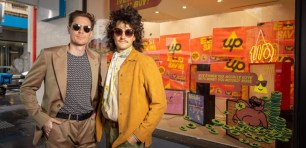
Source: Fred Moon/Unsplash.
Dry July may be over, but for many Aussies ditching the bottle is no longer a once-a-year pledge.
The sober momentum is being led by the newest consumer generations — gen Z, millennials or, as they are now being called, ‘Gen Sober’. Data from Roy Morgan points to a steady decline in alcohol consumption among young Aussies compared to their older peers. The Endeavour Group, which operates Dan Murphy’s and BWS, has seen its non-alcohol category grow 150% over two years, spurred by booze-free consumers.
Some of these motivations can be linked back to today’s mantras of ‘knowledge is power’ and ‘health is wealth’. The health and wellness culture has taken off among young generations, who are more likely to prioritise their mental health and wellbeing compared to baby boomers. Social media also has a role to play, with consumers using it to source more information and to project their healthier and happier lifestyles online.
Are brands keeping up with this trend?
Using iStock’s VisualGPS Insights tool to analyse, in the style of Google Trends, key search terms of visuals relating to “alcohol” in Australia, captured by billions of istock.com search and download results, we found that while there was an even split of men and women featured drinking alcohol, there was a clear age difference. In fact, young adults aged 20-29 years make up three quarters (77%) of alcohol-related images. Further to this, white people were featured the most in popular visuals (81%) with 90% depicting slim bodies.
This does not reflect the new consumer reality. Maintaining a healthy lifestyle is a top priority for young adults, our VisualGPS research finding that 84% of gen Z and millennials are planning to develop daily wellness practices. Further 82% of young consumers are planning to explore new and different ways to improve their mental and physical health, such as reducing their overall alcohol consumption.
How can brands appeal to young sober consumers?
Today, many consumers have stopped using brands who aren’t transparent, honest, and real — and in order to establish brand trust through visual storytelling, truth and authenticity are key. For brands, it’s understanding what realness now means so you can adapt your image and video strategy to optimise for it.
Realness is about accepting differences, finding empathy for how others experience the world, and having the ability to bring our whole selves into everything we do. At Getty Images & iStock, we are seeing that there are two paths realness takes: personal realness, which is understanding how consumers react to the world around them; and marketplace realness, which is how brands reflect reality to better connect with their customers.
We are in the era of the value driven consumer where they are purchasing from brands that align with their personal values. Taking celebratory moments as an example, such as birthdays, or securing a new job, they are often visualised with people toasting a beverage. However, we know from our VisualGPS data there has been a shift towards wellness for the gen Z and millennials, with smaller everyday moments being celebrated. Diversifying not only who you are depicting, but how you are depicting “celebrations” is important.
For brands selling alcohol and non-alcoholic beverages, consider how you can reflect your audiences’ individuality, by expanding the ages, body types and ethnicities you feature, in your brand images and videos, not relying on stereotypes but reflect these value driven consumers in order to build trust and better connect with them.
Handpicked for you

Up launches pop-up store to promote Maybuy, says in-person branch could one day be a possibility



COMMENTS
SmartCompany is committed to hosting lively discussions. Help us keep the conversation useful, interesting and welcoming. We aim to publish comments quickly in the interest of promoting robust conversation, but we’re a small team and we deploy filters to protect against legal risk. Occasionally your comment may be held up while it is being reviewed, but we’re working as fast as we can to keep the conversation rolling.
The SmartCompany comment section is members-only content. Please subscribe to leave a comment.
The SmartCompany comment section is members-only content. Please login to leave a comment.